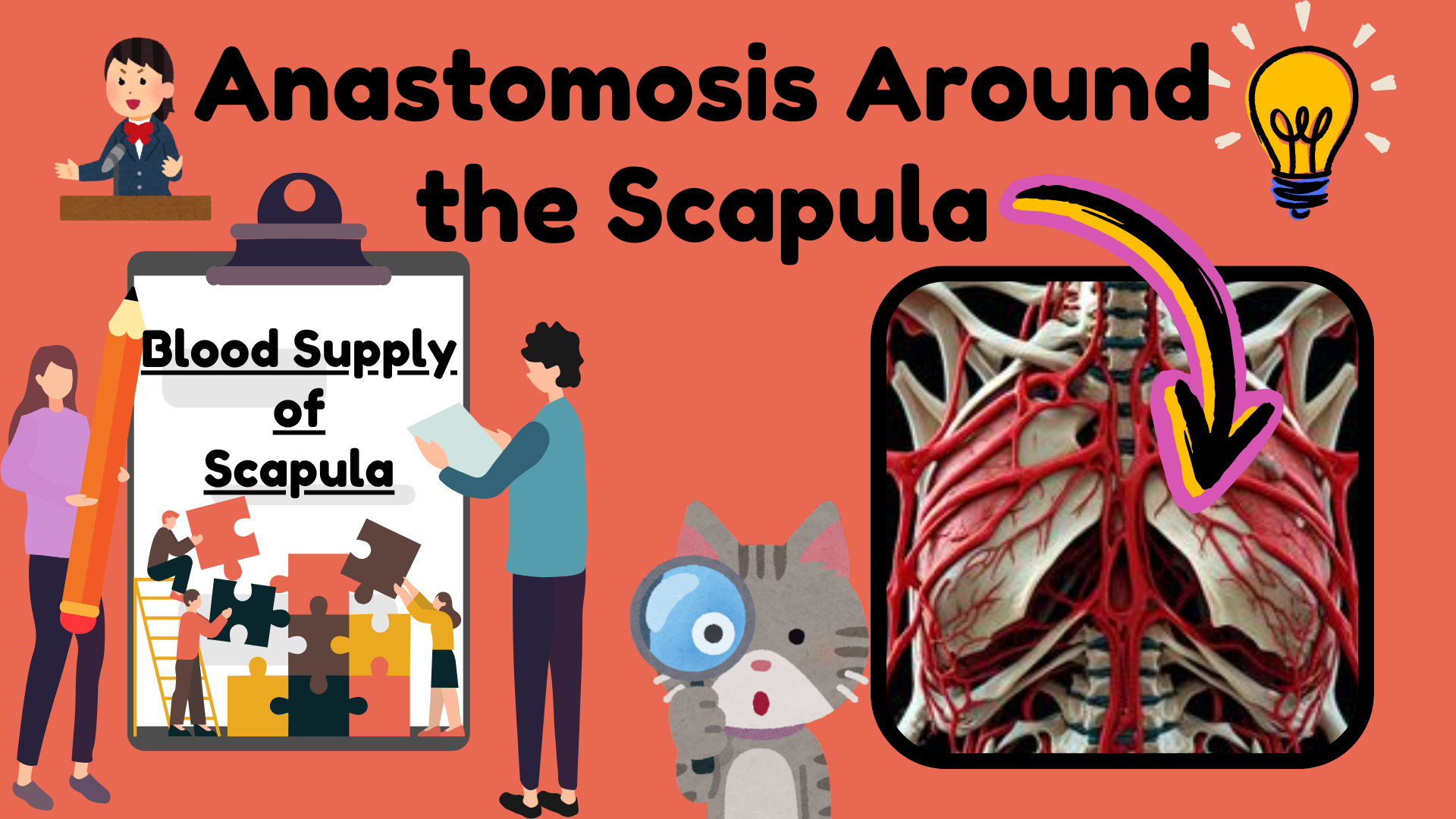Anastomosis Around the Scapula
The anastomosis around the scapula is a critical vascular network that ensures continuous blood supply to the shoulder and upper back muscles.
This is an anastomosis between the 1st part of Subclavian artery
And 2nd and 3rd parts of Axillary artery.

Arterial Contributions
The scapular anastomosis involves several arteries that arise from subclavian and axillary arteries. Therefore, The main contributors to this anastomosis are:
- Subclavian Artery
- Axillary Artery
1. Subclavian Artery Branches
Two branches from 1st part of Subclavian artery that contribute are:

- Suprascapular Artery: Arises from the thyrocervical trunk, a branch of the subclavian artery. It travels over the superior transverse scapular ligament to supply the supraspinatus and infraspinatus muscles.
- Dorsal Scapular Artery: Arises from the transverse cervical artery, another branch of thyrocervical trunk. It runs along the medial border of the scapula, supplying the rhomboid muscles and parts of the trapezius.
2. Axillary Artery Branches
Third part of Axillary artery gives off 2 branches, that contribute to this anastomosis. These are:
- Subscapular Artery
- Posterior Circumflex Humeral Artery

- Subscapular Artery: A branch of the third part of the axillary artery, it quickly gives rise to the circumflex scapular artery and the thoracodorsal artery.
- Circumflex Scapular Artery: Passes through the triangular space and curves around the lateral border of the scapula to anastomose with the suprascapular and dorsal scapular arteries.
- Thoracodorsal Artery: Descends along the lateral border of the scapula to supply the latissimus dorsi muscle and anastomose with other vessels in the region.
- Posterior Circumflex Humeral Artery: Another branch of the 3rd part of axillary artery, which contributes to the blood supply of the shoulder joint and muscles around the scapula, indirectly supporting the anastomosis.